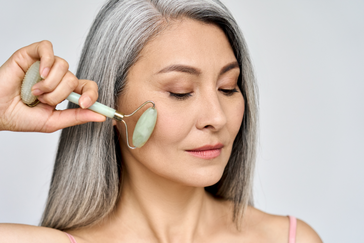Red Curry Noodle Bowls
Posted by Mike Miryala on

Red Curry Noodle Bowls are a flavorful and satisfying dish inspired by Thai cuisine. They typically consist of a rich and aromatic red curry broth, rice noodles, and an assortment of vegetables and protein. Here's a general overview of how they are typically prepared:
- Red Curry Base: The base of the bowl is a red curry sauce made from a blend of red curry paste, coconut milk, and various spices and seasonings. The curry paste provides the dish with its distinct spicy and savory flavors.
- Noodles: Rice noodles, such as vermicelli or rice sticks, are commonly used in red curry noodle bowls. These noodles are cooked separately according to the package instructions and then added to the bowl.
- Vegetables: A variety of vegetables can be included in the noodle bowl to add color, texture, and nutritional value. Common choices include bell peppers, carrots, snow peas, broccoli, and mushrooms. These vegetables can be thinly sliced or cut into bite-sized pieces.
- Protein: Red curry noodle bowls can be customized with your choice of protein. Popular options include tofu, shrimp, chicken, or thinly sliced beef. The protein is typically cooked separately and added to the bowl alongside the noodles and vegetables.
- Garnishes: To add freshness and additional flavors, red curry noodle bowls are often garnished with fresh herbs such as cilantro or Thai basil, lime wedges, sliced chili peppers for extra heat, and chopped peanuts for added crunch.
To make a plant-based and low-carb version of Red Curry Noodle Bowls, you can substitute certain ingredients to fit your dietary needs. Instead of rice noodles, you can use shirataki noodles. And use tofu instead of animal products as your protein source.
Shirataki noodles are an excellent noodle alternative for a low-carb diet. They are made from konjac flour or konnyaku, which is derived from the konjac plant. Here's why shirataki noodles are a popular choice for low-carb diets:
- Low in Carbohydrates: Shirataki noodles are extremely low in carbohydrates. They are mostly composed of water and dietary fiber, resulting in a minimal impact on blood sugar levels. A typical serving of shirataki noodles contains zero or close to zero net carbs.
- Low in Calories: Shirataki noodles are also very low in calories, making them an excellent choice for weight management. They provide bulk and a sense of fullness without adding significant caloric content to your meal.
- High in Fiber: Shirataki noodles are rich in soluble fiber, which can help regulate blood sugar levels, support digestion, and promote feelings of fullness. The fiber content in shirataki noodles contributes to their low net carb count and can be beneficial for overall gut health.
- Versatile in Cooking: Shirataki noodles can be used as a substitute for traditional noodles in a wide variety of dishes. They can be stir-fried, sautéed, added to soups, or used in pasta dishes. Due to their mild flavor, they can easily absorb the flavors of the sauces and ingredients they are cooked with.
Tofu is an excellent plant-based protein source that is widely used in vegetarian and vegan diets. It is made from soybeans and is known for its versatility, mild flavor, and ability to absorb other flavors well. Here are some key points about tofu as a protein source:
- Protein Content: Tofu is considered a complete protein as it contains all essential amino acids required by the body. The protein content can vary depending on the firmness of the tofu, but on average, it contains about 8-15 grams of protein per 3.5-ounce (100-gram) serving.
- Nutrient Profile: Tofu is not only a good source of protein but also provides other essential nutrients. It contains iron, calcium, magnesium, phosphorus, and various B vitamins. It is also low in saturated fat and cholesterol-free.
- Versatility in Cooking: Tofu can be prepared in numerous ways to suit different recipes and preferences. It can be stir-fried, grilled, baked, sautéed, or even blended into smoothies or used as a filling in sandwiches. The texture of tofu can range from silken and soft to extra firm, allowing for a wide range of culinary applications.
- Health Benefits: Tofu is a staple in many plant-based diets due to its potential health benefits. It is associated with a reduced risk of heart disease, improved bone health, and better blood sugar control. As a low-calorie and low-fat protein source, it can also support weight management goals.
When using tofu as a protein source, it's important to select the right firmness for the recipe. Silken tofu is great for blending into sauces, dressings, and desserts, while firmer tofu varieties work well in stir-fries, grilling, or baking where a chewier texture is desired.

Red Curry Noodle Bowls
Prep Time: 10 minutes
Cook Time: 10 minutes
Yield: 2 servings
Category: Lunch, Dinner
Cuisine: Asian
Ingredients:
- 1 (7 oz or 200 g) package of fettuccine shirataki noodles
- 1 Tablespoon (15 ml) of sesame oil, to cook with
- 1 medium red chili pepper (1/2 oz or 14 g), sliced (optional)
- 1 Tablespoon (5 g) of fresh ginger, peeled and minced
- 1 garlic clove (3 g), peeled and minced
- 1/2 medium red bell pepper (2 oz or 60 g), thinly sliced
- 1/2 zucchini (2 oz or 60 g), made into noodles
- 2 Tablespoons (30 g) of red curry paste (or to taste)
- 3 Tablespoons (45 ml) of coconut cream (from the top of a refrigerated can of unsweetened coconut milk)
- 2 teaspoons (8 g) of sesame seeds (for garnish)
- Salt and pepper, to taste
Instructions:
- Drain and rinse the shirataki noodles. Place the rinsed noodles in a pot of boiling water for 2 to 3 minutes and drain well. Set aside until ready to use.
- Add the sesame oil to a skillet over high heat. Add the optional chili pepper, fresh ginger, and garlic to the skillet and saute until fragrant, about 2 minutes.
- Add the bell pepper to the skillet and saute until softened, about 3 to 4 minutes.
- Add the drained shirataki noodles, zucchini “noodles,” red curry paste, and coconut cream to the skillet and cook until heated through, about 3 minutes. Season with salt and pepper, to taste.
- Divide between 2 bowls and garnish with sesame seeds before serving.
Nutrition: (Estimated and based on per-serving amounts.)
- Calories: 180
- Fat: 14 g
- Total Carbs: 10 g
- Fiber: 4 g
- Sugar: 2 g
- Net Carbs: 6 g
- Protein: 2 g






